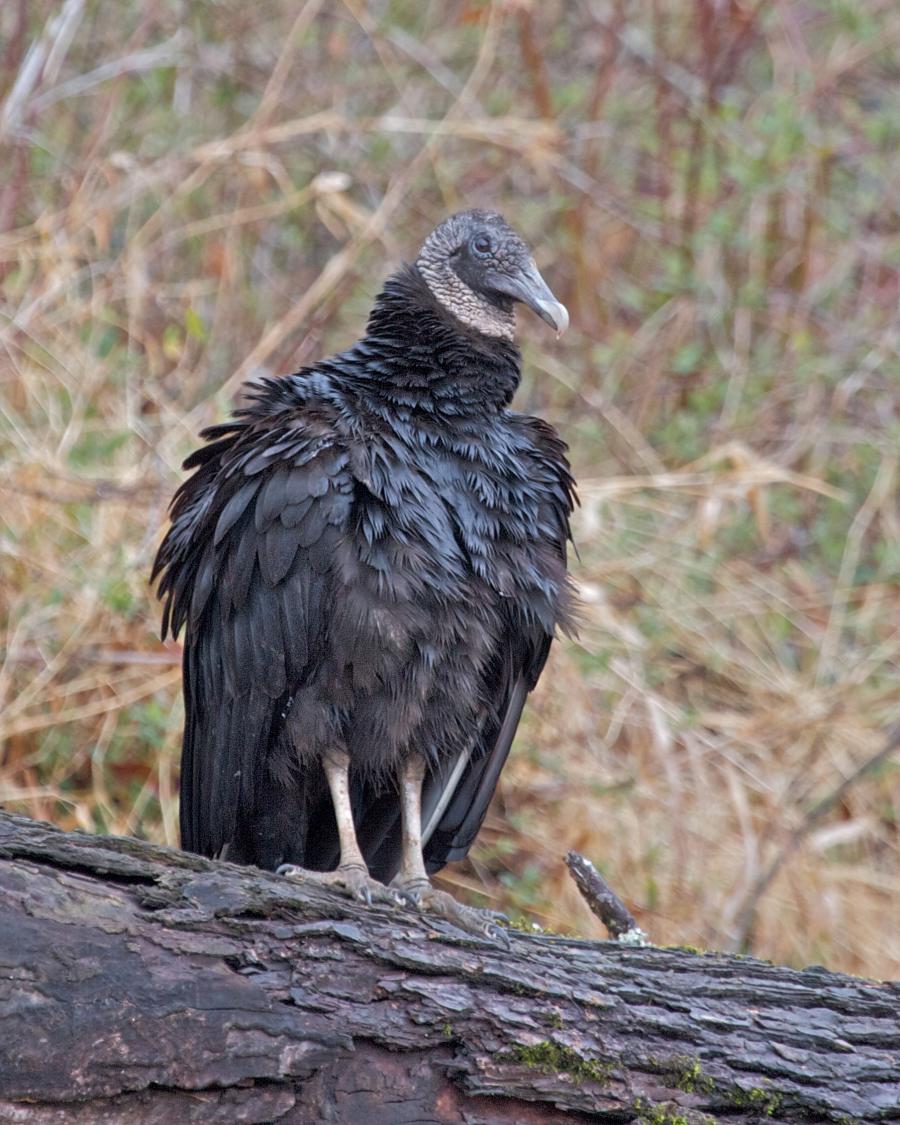SCIENTIFIC NAME:
Coragyps atratus
OTHER NAMES:
buzzard, carrion crow, Charleston eagle
STATUS:
Breeder. Fairly common in late spring, summer, and fall, but uncommon in winter and early spring in Tennessee Valley region. Common to fairly common throughout year in other regions. Lowest Conservation Concern.
DESCRIPTION:
The black vulture is a relatively large bird with a length of 22 to 24 inches. The wingspan is approximately four-and-a-half feet. It is primarily black with a white patch near each wing tip. The head is bare and grayish in color. Compared to the turkey vulture, it has a short tail. When in flight, it flaps its shorter and rounder wings more often and more rapidly than the turkey vulture.
DISTRIBUTION:
The black vulture is common throughout all of Alabama. It is more or less a resident from Texas and Arkansas north and east to New Jersey (rarely to Massachusetts and Maine) and south to Florida. It is also found in the American tropics.
HABITAT:
Black vultures can be found in open country, but they breed in light woodlands and thickets.
FEEDING HABITS:
Black vultures are scavengers, and feed primarily on carrion (rotting meat). They also take weak, sick, or unprotected young birds and mammals. They are smaller but more aggressive than the turkey vulture and will drive the latter from a carcass. Both species are often found perched in trees, on fence posts, and on the ground; or flying overhead, especially on windy days, taking advantage of thermals or updrafts. Unlike turkey vultures, black vultures lack well-developed olfactory senses and rely on their vision rather than smell to help them locate a carcass. Often they will follow turkey vultures from the roost and take over a carcass which the turkey vultures have located by smell.
LIFE HISTORY AND ECOLOGY:
Black vultures do not construct a nest and will sometimes lay their eggs on the ground under a bush, in thickets, in a hollow tree or log, in caves, or occasionally in abandoned buildings. Breeding is done by solitary pairs. They often lay two (rarely three) eggs which are greenish white with brown markings. The eggs are different in size, color, markings, and shape. It takes about 37 to 41 days for the eggs to hatch and both the male and female sit on the nest.
Young birds are ready to leave the nest at about 14 weeks. Nestlings are covered with buff to cream colored down. Black vultures are ready to take their first flight at about 75 to 80 days old. Black vultures nest two weeks earlier than turkey vultures, and start breeding at around three years of age. Black vultures can often be found roosting with turkey vultures in large communal flocks containing as many as 1000 birds. Their aggressive nature carries over to their roosting behavior and they will dominate turkey vultures for choice roosting positions.
REFERENCES:
Bull, J., J. Farrand Jr. 1994. National Audubon Society Field Guide to North American Birds. Chaticleer Press, Inc., New York, NY. 797 pp.
Author:
Chas Moore, Wildlife Biologist






